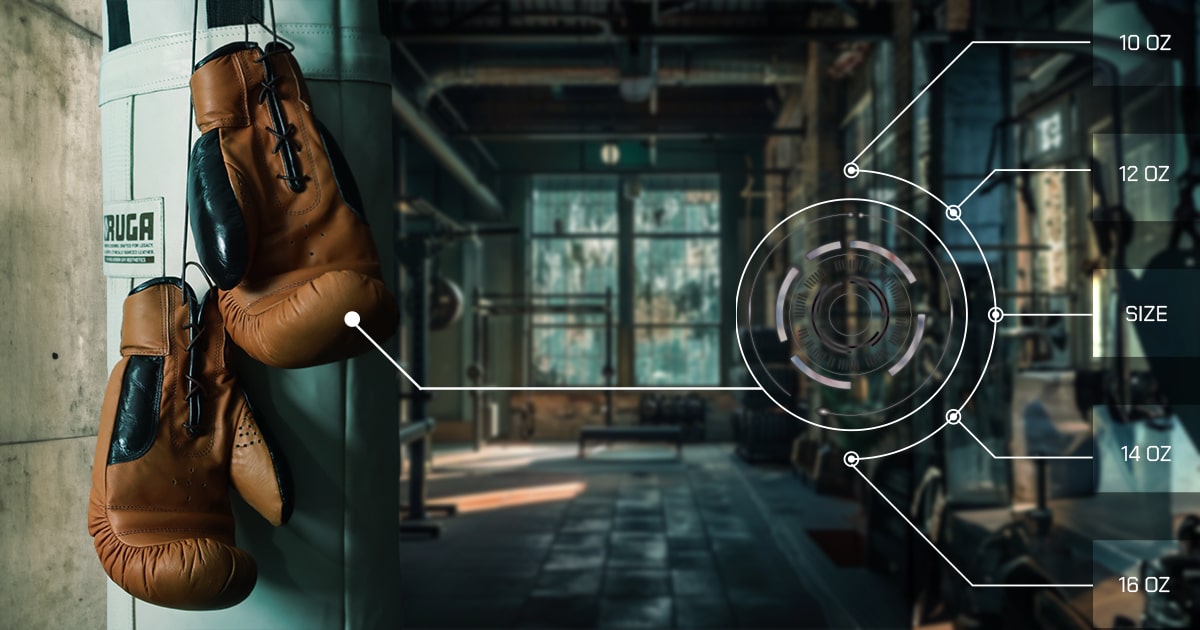When it comes to boxing, having the right gloves is as essential as mastering the jab. Whether you’re a seasoned fighter or just starting out with a home gym setup, choosing the correct glove size will impact not just your performance but also your protection. In this guide, we’ll break down everything you need to know about selecting the right size boxing gloves, from understanding glove sizing to finding the perfect pair for your weight class and training style.
Understanding Glove Sizes:
Boxing gloves are measured in ounces (oz). The weight of the glove affects not only the level of protection it offers but also the intensity of your workout. Here’s what each weight class means for you:
- 10 oz Gloves: Ideal for hitting pads and light bag work. They offer speed and agility, making them a popular choice for professional boxers during competitions.
- 12 oz Gloves: A great all-around option for individuals under 120 pounds or those looking for a lighter glove for sparring.
- 14 oz Gloves: The versatile middleweight glove suitable for individuals weighing between 120 to 150 pounds, perfect for both training and sparring.
- 16 oz Gloves: The heavyweight of gloves, offering maximum protection. They are recommended for individuals over 150 pounds and for those who prioritize safety during heavy sparring sessions.
Glove Style Differences:
There are various styles of boxing gloves to suit different aspects of boxing training:
- Bag Gloves: Designed specifically for heavy bag use, they’re typically lighter in weight to allow for a faster workout.
- Training Gloves: The all-rounders of the glove world, training gloves are suitable for bag work, pad sessions, and sparring.
- Sparring Gloves: These are generally heavier to ensure both fighters’ safety during practice bouts.
- Competition Gloves: Used in amateur and professional matches, these gloves are lighter, allowing for sharper and more powerful punches.
Home Gym Usage and Weight Recommendations:
For those setting up a home gym and looking for a versatile glove, consider your own weight and the primary use of the gloves:
- Under 120 pounds: A 12 oz glove can provide a balance between speed and protection.
- 120 to 150 pounds: Opt for 14 oz gloves if you want to add some heft to your punches without compromising on speed.
- 150 pounds and above: 16 oz gloves will offer the protection needed for longer training sessions and sparring.
Boxing Glove Size Chart
| Glove Weight (oz) | Fighter Weight (lbs) | Hand Circumference (inches) |
|---|---|---|
| 10 oz | 100 – 125 | 5.5 – 6.5 |
| 12 oz | 125 – 150 | 6.5 – 7.5 |
| 14 oz | 150 – 175 | 7.5 – 8.5 |
| 16 oz | 175 and up | 8.5 and up |
FAQ'S
“Oz” stands for ounces and refers to the weight of the boxing glove. It affects the amount of padding and protection the glove provides.
Generally, the heavier you are, the heavier your gloves should be. This ensures proper protection. Use our weight-based sizing guide to find your match.
Heavier gloves provide more padding, which can be better for heavy bag work as they protect your hands from the repeated impact.
It’s possible, but not always recommended. Sparring gloves usually have more padding for safety, while bag gloves are designed for the impact of the bag.
Beginners might start with lighter gloves for better technique development, while advanced boxers often use heavier gloves for strength training and sparring.
Lace-up gloves, with their snug and customizable fit, are a tribute to boxing’s golden era, offering a vintage style that’s both classic and effective, while Velcro gloves provide the convenience of quick fastening for modern training convenience.
Gloves should fit snugly over your hand wraps without cutting off circulation or allowing excessive movement within the glove.
Genuine leather gloves typically offer the best durability and performance, while synthetic materials can be a cost-effective alternative.
Depending on usage frequency and quality, boxing gloves should be replaced when they show significant wear, or padding becomes too compressed.
Yes, but lighter gloves are generally recommended for speed bag work to improve hand speed and coordination.





 No products in the cart.
No products in the cart.